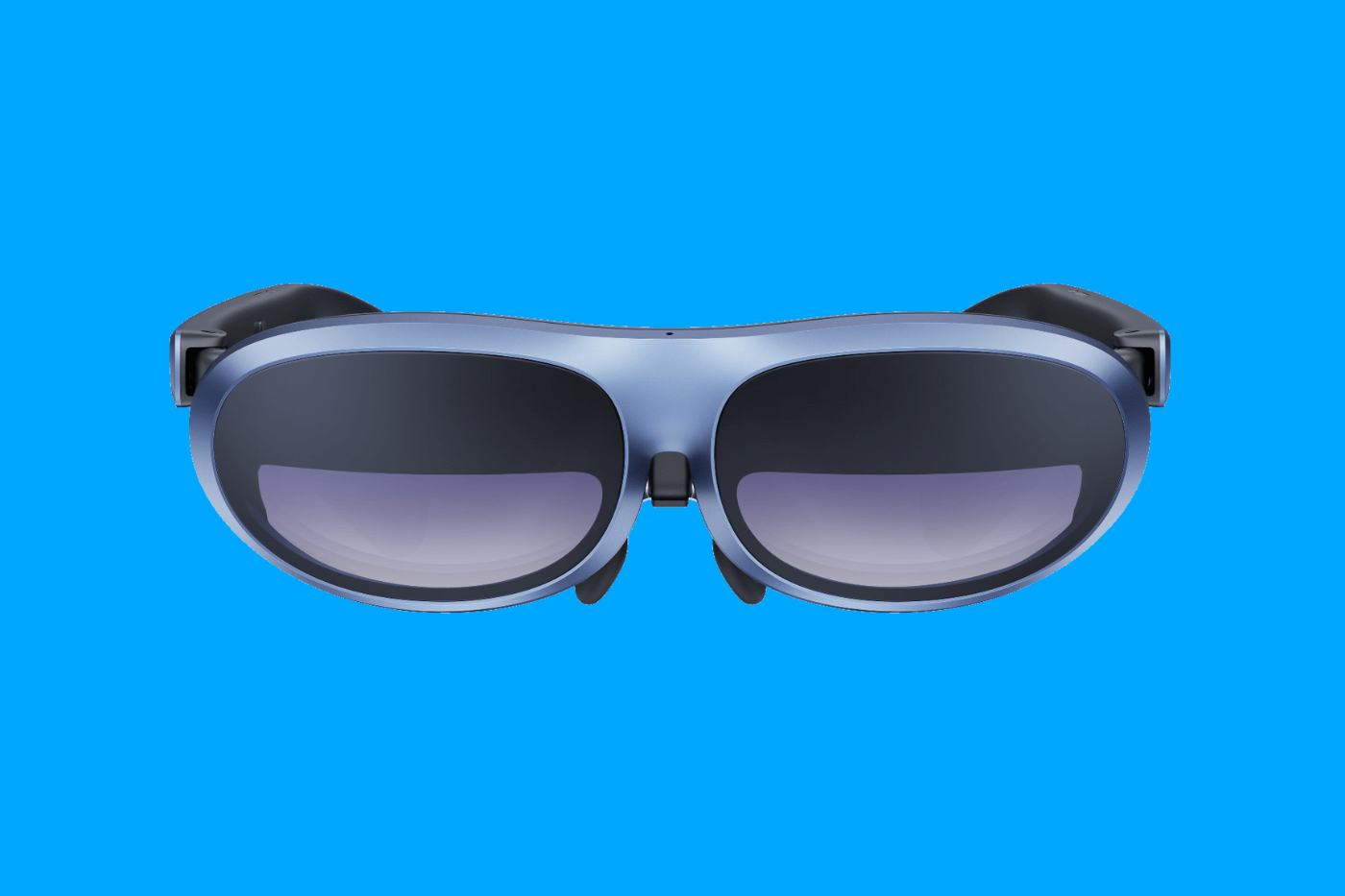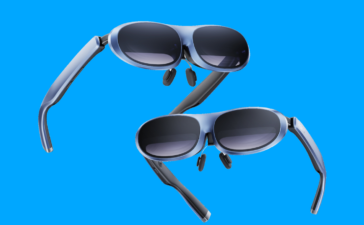AR smart glasses company Rokid has just launched its next consumer product, “Rokid Max.” Shipping isn’t scheduled to start until the end of April, but here’s everything that we know about the glasses so far from a shared press release and user manual.
The Specs
Like most consumer AR glasses on the market today, Rokid Max is presented exclusively as a virtual screen for mirroring a smartphone. That can mean online content, downloaded movies, games, or any productivity apps. Users can also switch to a “3D mode” for viewing 3D content in an app or WebXR experience.
As viewers, they have some solid specs. The lenses themselves offer a 1080p micro-OLED display for content running at a 120Hz refresh rate. They clock in at a 50-degree field of view (which lands solidly between the two main competitors – Nreal’s Air and Light models). The resulting virtual screen is comparable to a “215-inch boundaryless display from [19 feet] away.”
The glasses also offer manual diopter adjustment via a dial over each lens. According to the release, this can be used by non-glasses-wearing users to sharpen the image, or by those users who normally need prescription lenses. Users will also be able to adjust audio settings which include noise cancellation for maintaining privacy and sound quality, though this option will be available within a couple of months post-delivery.
The total hardware itself is no wider than a pair of glasses and just under three-quarters of an inch thick, though it’s unclear whether that includes an optional nose pad and a “blackout cover” for over the lenses. They weigh in at less than a fifth of a pound. The glasses do fold, and come with a carrying case.

As the glasses do not have their own onboard battery, they do require a hard connection to the streaming device, similar to other consumer AR glasses. Rokid Max will be available for preorder from the manufacturer starting today, for $439. During the presales period, which runs until April 30, there’s a $20 discount with the code “ROKIDPRESS20OFF”.
How Does Rokid Max Square Up?
Rokid Max is an interesting product. The glasses have their biggest competitor in Nreal Air, so we can hold them up to each other to understand Rokid’s position in the market.
Nreal Light has a few things going for it. First, it’s slightly cheaper. Second, it can connect to gaming consoles and laptops as well as mobile phones. Nreal Air also has a limited but promising 3DoF AR input system. Something like that might be true of Rokid as well, but none of the materials shared with ARPost mention it.
Rokid Max hits back in a couple of key areas. It has a slightly larger field of view, which is a pretty big deal when comparing what are essentially media viewers. Further, Rokid has a lot of cool modular components.
Manual diopter controls are a big deal, particularly for people that need glasses. Nreal offers corrective lenses for their glasses, but it’s a paid accessory so if you need glasses, Nreal’s lead in the price category disappears immediately. The removable nose pad is also a cool option.
Finally, the blackout cover is a really cool play, particularly for productivity. AR glasses tend to be “sunnies” because blocking light from the outside improves immersion and viewing comfort and quality. In entertainment applications, there aren’t really any drawbacks to that, but in productivity settings, it can make it harder for you to see your environment as well as the display.

There’s one potential concern I have about this. Darkening the environment also means that the display doesn’t have to run as bright, which saves battery and reduces heat. If the light blocker is optional, that may mean that the display is working harder than it has to, which could have negative effects on the battery life and some other elements.
We’ve Got Our Eyes On You
We wish Rokid Max the best. We have to. We’re still so early on in the field of consumer AR glasses that every new entry is a winner. But, more than that, while there are some things that we could ask of Rokid, the glasses introduce a lot of killer innovations that certainly set it apart.



